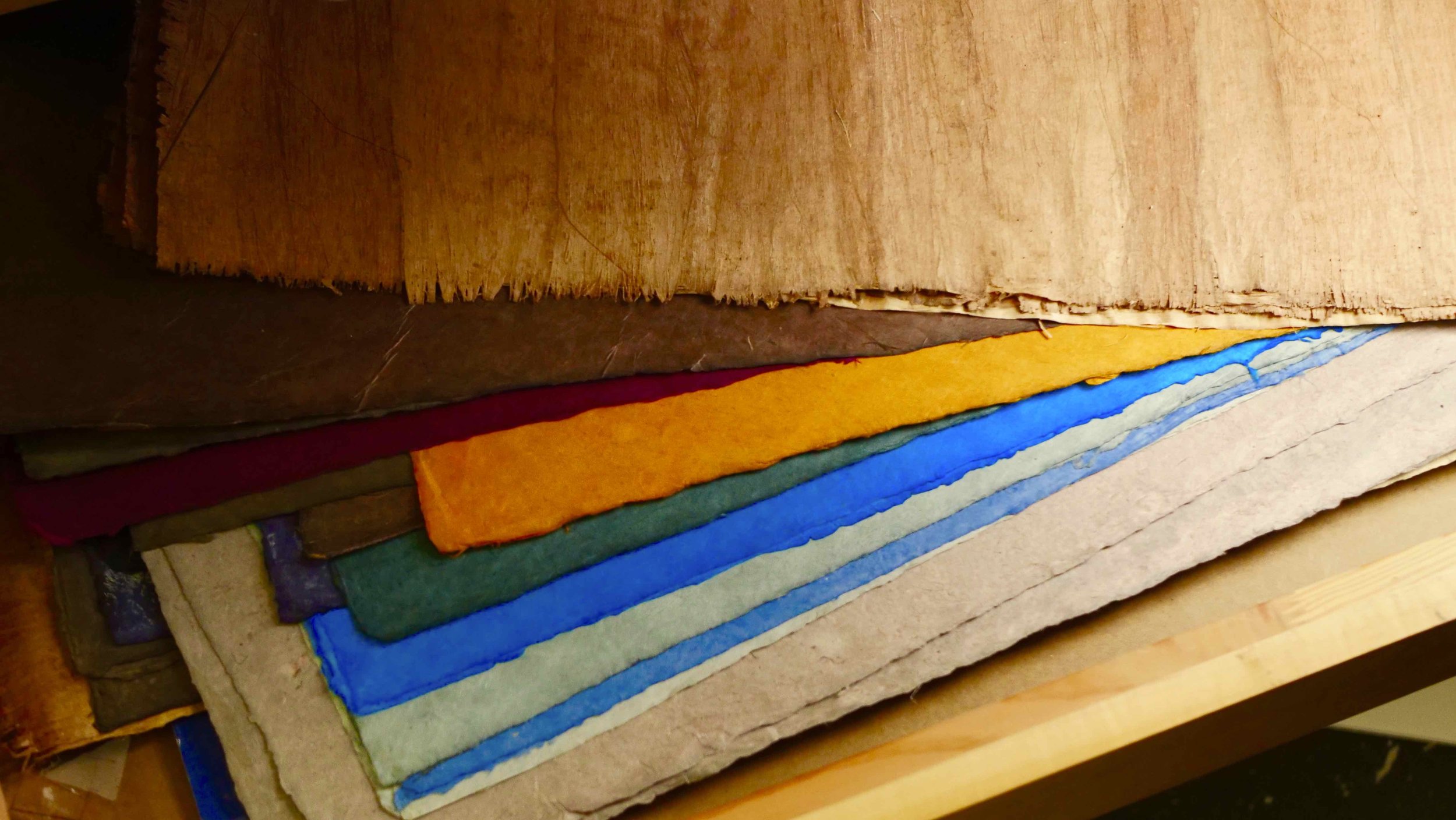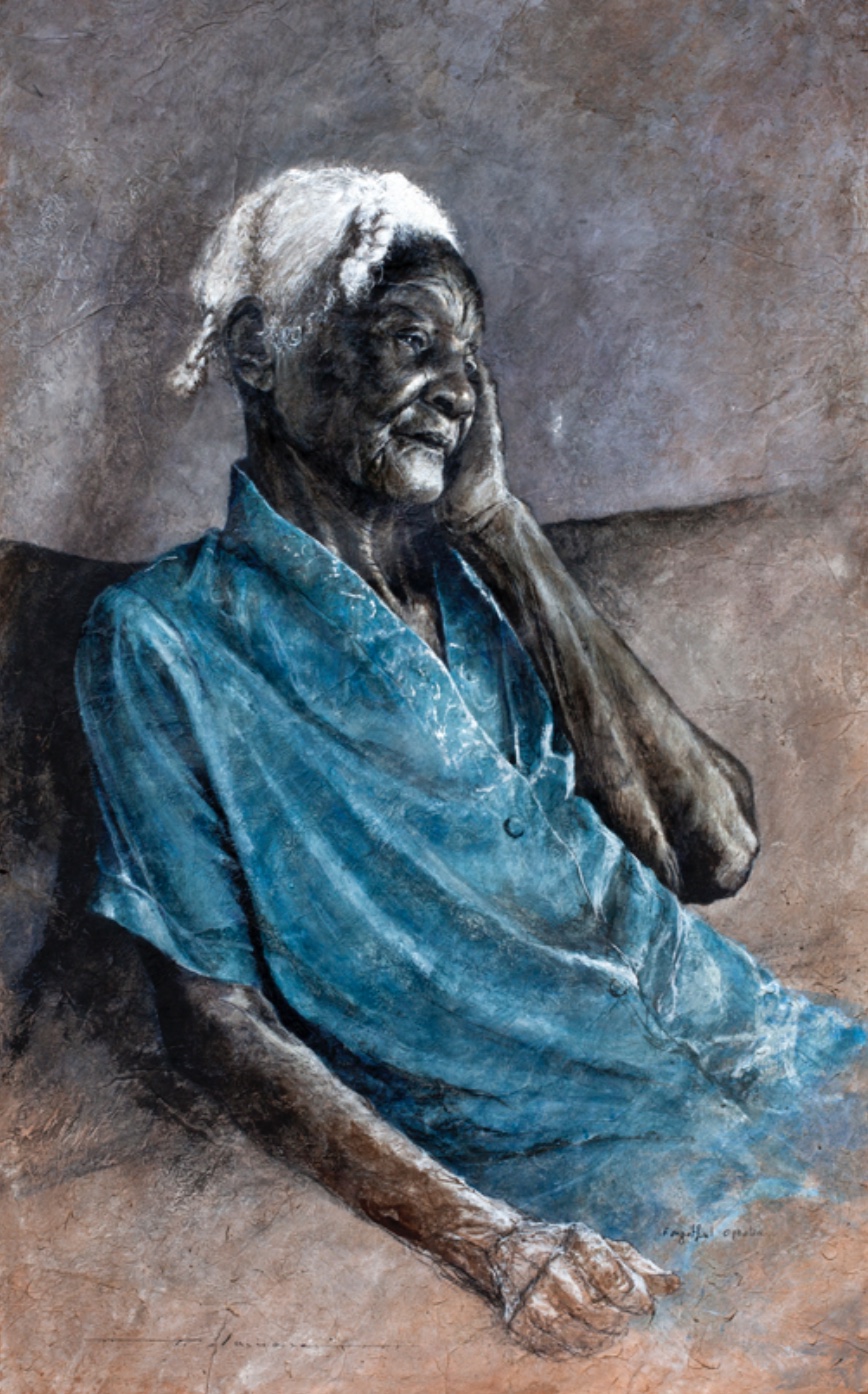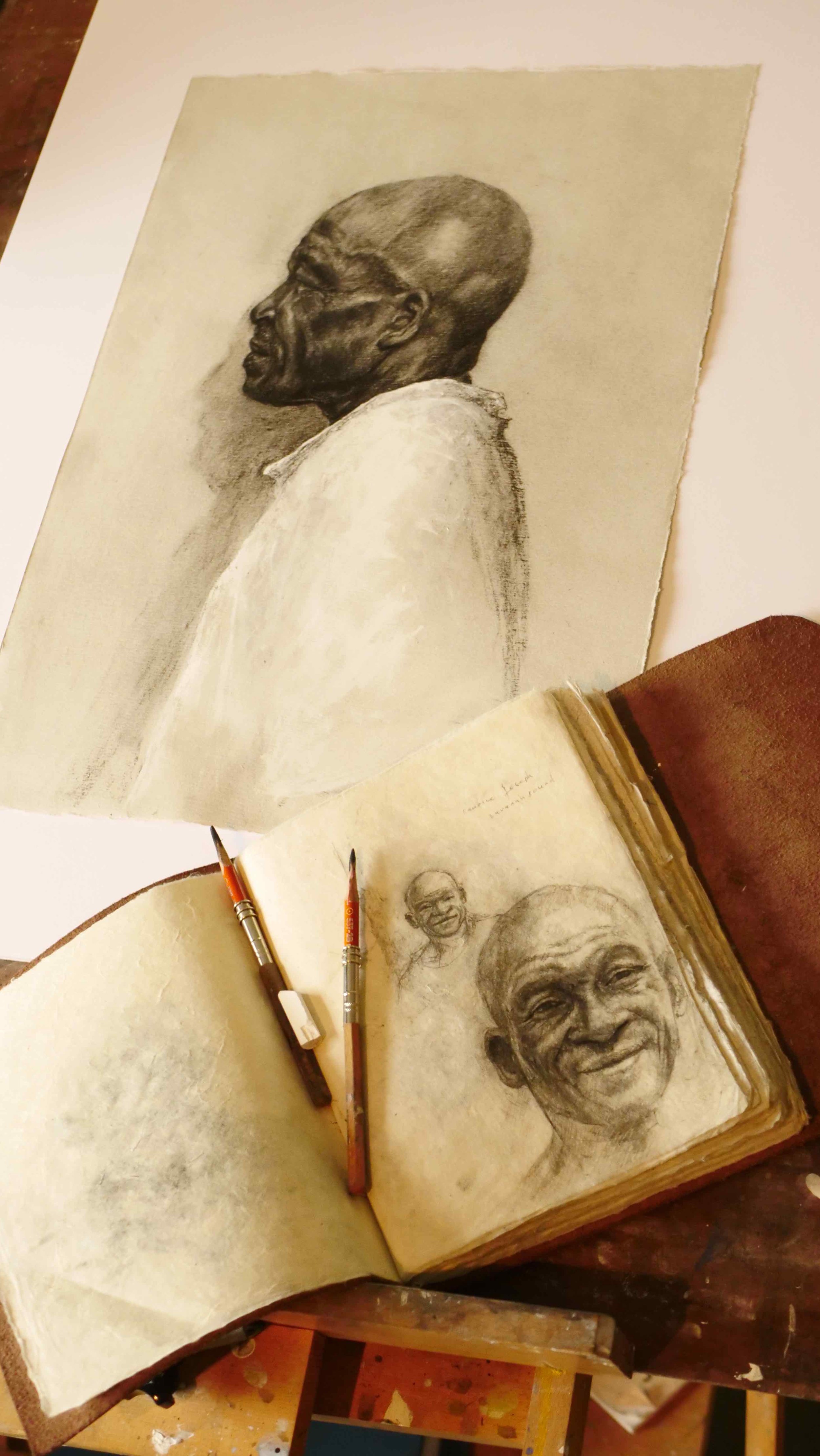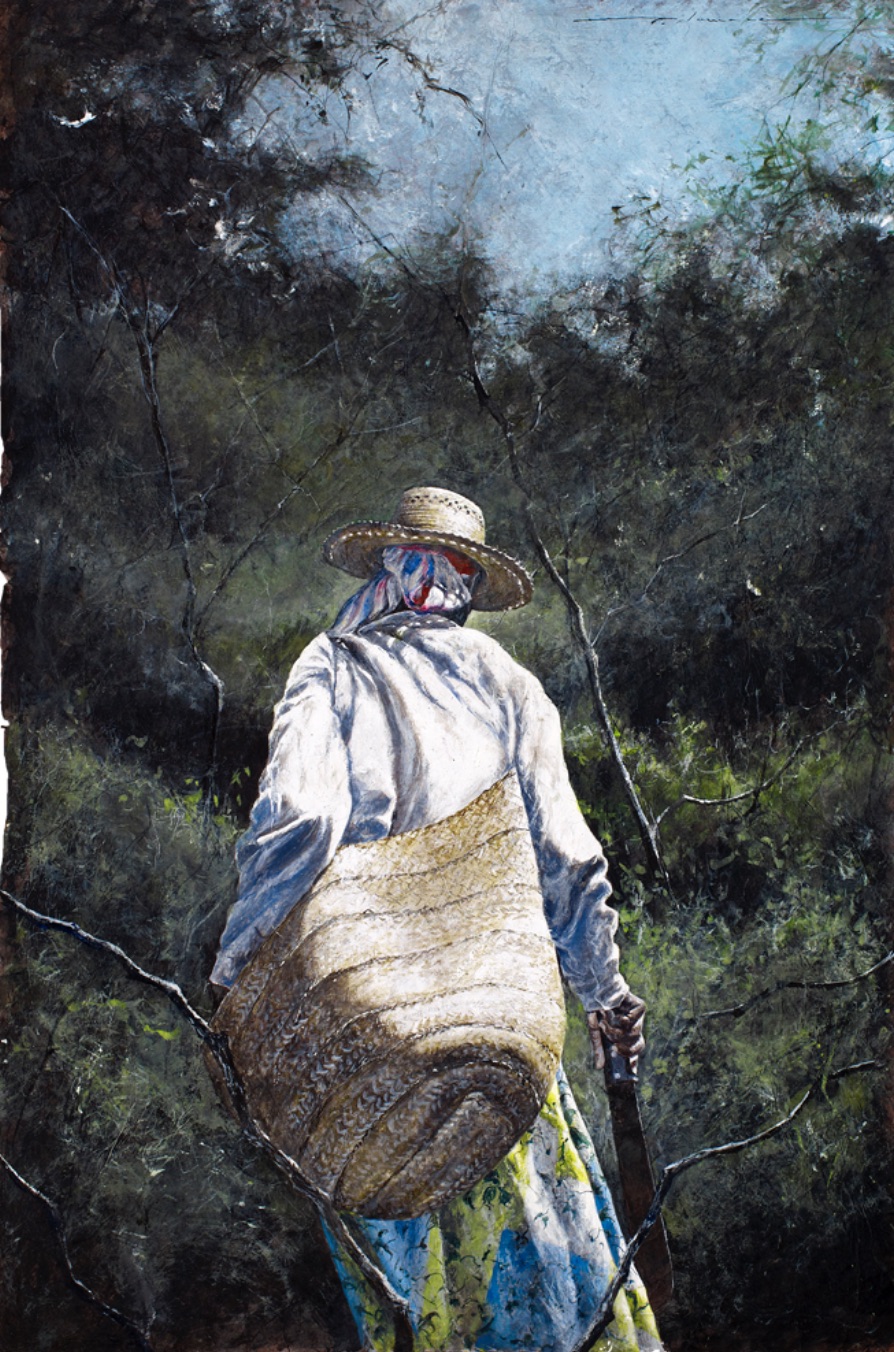ARTIST IN THE SPOTLIGHT: Thierry Lamare
Welcome to Cacique’s Artist In The Spotlight series - a journey into a thriving Bahamian art scene and a look at some of the most celebrated artists, as well as the movers and shakers garnering a name for themselves at home and around the world. In this fourth episode, we have the great pleasure of speaking with the artist Thierry Lamare, a French transplant whose striking realist portraits of Bahamians have been described as having a "terrifying quality" of realism and detail comparable to American master Andrew Wyeth - Sir Christopher Ondaatje.
Story Teller. Watercolour on Twinrocker paper. Collection of Dale & Marilynn Blanchard.
“Painter and transplant Thierry Lamare has called The Bahamas his home for almost thirty years. Over that period, he has become a keen observer of the Bahamian landscape, its people, customs, and traditions, some of which are slowly fading, others shifting quickly like the dying light which he captures so evocatively.”
Cacique. How do you go about choosing your models?
Thierry. I don't really "choose" them; I wait for serendipitous moments to present themselves. For example with Louis Taylor, I am there in Long Island photographing his cottage and he comes out. My emotional chord vibrates and I just know I want to paint him. It's important to establish a genuine connection, to interact in everyday life. I go back to Louis's house one day and it's bordered up. Sadly, I find out that he has passed. But that's life...
I actually met Louis Taylor on my way to see Ophelia, who I had met in a similar way. I would visit her regularly, joining her on her hardy daily routine - still working her farm, crabbing and fishing in her late 80s. She too passed in July 2016; she was 93. Older people interest me...how their lives shape their character. I have to find a connection. It has to be natural.
“The quality of realism and detail found in Lamar’s work is startlingly apparent, sometimes disturbingly so. He bathes his subject with real light creating a moody visual effect - sometimes reminiscent of Andrew Wyeth’s Christina’s World, which so startled the American art scene in 1948.”
Cacique. Once you have "discovered" a model, what is your creative process?
Thierry. I get to know my characters like I'm writing a novel. I start with small sketches, then move into medium size to extend the details and make the character come out. The soul. Who is that man? What is his life about? What is his journey? Therefore, I never draw strong expression because I want the soul to come out. The eyes are the most important form of natural expression. Once the character speaks to me, I know I have it and can move onto the final piece. With Ophelia, this process, this relationship, lasted 10 years.
"I get to know my characters like I'm writing a novel." Thierry Lamare. Study of Maurice Joseph.
C. I see you use different types of paper. How does this influence your work?
T. I like to play around with different types of paper because they have different personalities. I have to adapt my technique to the material, for example when I was experimenting with hard paper, I found that charcoal did not work so I used casein and black ink. Sometimes, I have to saturate the paper. I got a beautiful sketch book from Nepal with Lokta Paper - it grows at 2500 metres above sea level at the foot of a glacier. It is fibrous and tainted with vegetal dye. Actually, I first discovered Lokta Paper in Sennelier - the oldest art store in Paris, been around since 1904.
C. How do your characters typically react to you wanting to paint them?
T. At first, they can't understand. Why? What is so special about me? A conversation ensues which triggers stories, and the personality comes out. Years go by. One day Joyce was 70 and the next she was 75. She was a poser at first but after a few years, she asked why I want to paint her. "I'm ugly," she said. " I used to be a peach." I said you are a peach to me. She was a butterfly. I knew her from 97 to 2005. Actually, it was Joyce who inspired me to switch to portrait. Before her, I was doing scenery. She was the most iconic model for me. I first met her when I saw her cottage; she came out of it in a blue dress...
Orphelia "sculling" her way out to go fishing. Long Island.
“I don’t think there is anything that is really magical unless it has a terrifying quality.””
C. Would you say that you have captured the Bahamian soul?
Thierry Lamare. A short film by Derek Burrows and Indrani Kopal.
T. I understand a certain kind of Bahamian life. It is the same as other countries...rough living. Hardship. On Long Island, Ophelia had no air-conditioning, two bedrooms, ten kids, a zinc bucket for bathing. School. Farm. Fishing. That was her life. She was losing her mind at the end (see "Forgetful Orphelia below"). But she never complained. And she was always well dressed - a different costume for every occasion - farming, crabbing, fishing, and of course church. Her Sunday clothes were always impeccable. For her life was all about face and dignity. She had such a big faith in god.
One of my most memorable times with Orphelia was when she took me crabbing. Seventy something years old and lifting up big rocks - she was so in her element. Perfectly dressed of course. And me, I showed up in shorts! She wouldn't accept my help. Many modern-day Bahamians don't know about all this cultural heritage. It's vanishing. These stories need to be kept alive.
C. Any other particular stories that stand out?
T. There are so many but one story that particularly stands out was related to me by Ophelia about a fishing trip. Orphelia went out fishing one day, as she regularly did with her friend Betty, sculling* her little boat out to sea - she was in her 80s at this point and sculling is no easy task! About one mile off the coast, the boat sank. Orphelia lost site of Betty in the waves as the two friends swam for the shore. Reaching the point of exhaustion and abandoning herself to fate, Orphelia says that "suddenly the Lord lift the land for me." It was a shallow coral reef, which allowed herto take a vital rest before swimming the rest of the way to the shore. Betty reached some time later... The following year, I bought her some life jackets! I never finished the painting of this story. It remains a "final study."
*traditional Bahamian "sculling" involves the use of moving a single oar over the stern of the boat (see painting above).
Orphelia and Betty Conversation. Watercolour.
DISCOVER CACIQUE | ART EXPERIENCES
At Cacique, we look to showcase our colourful art scene and the characters that create its distinct flavour. For more information on Thierry Lamare or to arrange a Bahamian art experience, feel free to contact us.
Looking forward to showing you around! SMS ;)













